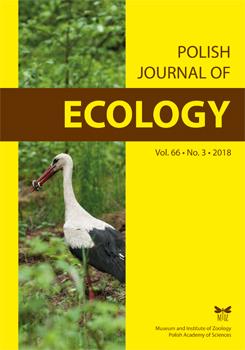In this study, generic composition of food and foraging preferences of the European beaver were determined on sites where the beavers were reintroduced after more than 200 years of absence. Research area was located on lowland (Silesian Lowland) and highland habitats (Bystrzyckie Mountains, Wałbrzyskie Mountains) in western Poland. During the study period, 17,418 trees and shrubs growing within the feeding area of the beavers were marked, out of which 4,669 were found to be cut by beavers. The results showed that the foraging preferences of beavers depend on the availability and diversity of the local food sources. In the lowlands beavers preferred the following species of trees and shrubs as their primary food source:
How to translate text using browser tools
1 September 2018
Selective Foraging on Tree and Shrub Species by the European Beaver Castor fiber in Lowland and Highland Habitats in Western Poland
Agnieszka Ważna,
Jan Cichocki,
Jacek Bojarski,
Grzegorz Gabryś
ACCESS THE FULL ARTICLE

Polish Journal of Ecology
Vol. 66 • No. 3
September 2018
Vol. 66 • No. 3
September 2018
European beaver
highland sites
lowland sites
selective foraging
woody plants




